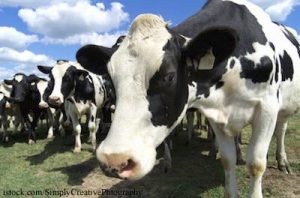A report released on December 6, 2012 showed that Brazil was the 26th country to report an incidence of Bovine Spongiform Encephalopathy (BSE), commonly called Mad Cow Disease. The USDA assumed that country did not have any BSE cases, so the mitigations that should have been applied to Brazilian beef imports were not.
 The report states that the animal did not die from the disease, and that it may have been atypical BSE, which occurs in older animals. Brazilian authorities blame an “overloaded system” as the cause of a two year delay for the test. BSE was suspected when the cow died in December 2010, and one primary test was negative. But a second primary test was not done until June 2012; that was positive. Another test of the brain sample was conducted in the United Kingdom; that was also positive on December 6, 2012.
The report states that the animal did not die from the disease, and that it may have been atypical BSE, which occurs in older animals. Brazilian authorities blame an “overloaded system” as the cause of a two year delay for the test. BSE was suspected when the cow died in December 2010, and one primary test was negative. But a second primary test was not done until June 2012; that was positive. Another test of the brain sample was conducted in the United Kingdom; that was also positive on December 6, 2012.
Whenever BSE is discovered in a country’s cattle, special tests and mitigations are applied. Japan has announced it will stop importing Brazilian beef because of the positive test. In 2003, U.S. beef was banned around the world when BSE was discovered in a cow in Washington state.
During this time period, the United States imported about 67 million pounds of Brazilian beef. R-CALF USA CEO Bill Bullard said in a statement, “none of the Brazilian beef imported into the U.S. during the past two years was subject to BSE mitigations that are supposed to apply to countries where BSE is known to exist, meaning U.S. consumers have been subjected to an unnecessary and avoidable risk of mad cow disease from Brazil.”
The OIE classifies the BSE risk status of different countries into three categories: negligible BSE risk, controlled BSE risk or undetermined BSE risk. Mitigations include animal feed restrictions, traceability, prohibition of certain cattle parts, including the spinal cord and brain from cattle older than 30 months, and ante- and post-mortem inspections.





Based on what researchers know about prions it doesn’t make sense to mre to allow spinal cords and brains of cattle younger than 30 months into nthe food chain even as animal feed. Just because you can’t see damage in the brains yet doesn’t mean the prions aren’t there.